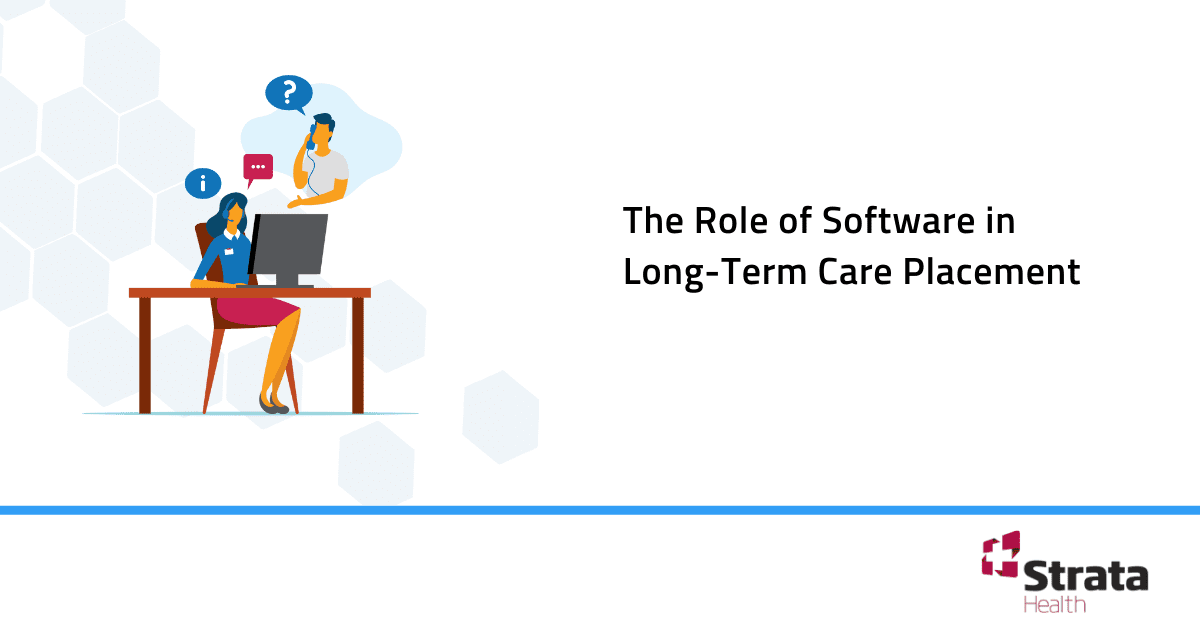
Universal healthcare in Canada was established in the 1960s when the average age of a Canadian was 27, and the average life expectancy was less than 70 years. Fast-forward to 2021, and that average age is almost 41 years, with a life expectancy of over 80.
While this increase in the average Canadian lifespan is a testament to incredible medical science progress and our universal healthcare system, it is not without complications. In short, Canada’s population is ageing, and that’s creating real strains for our healthcare system, particularly in the administration of long-term care. Recent estimates have put over 430,000 adult Canadians with unmet home-care needs and over 40,000 currently on waitlists for long-term care facilities.
Complex care transitions, such as finding and moving into long-term care, require continual adaptation to address changing needs, reduce cost and risk driven by inefficiencies and incorporate solutions that can produce better patient outcomes. With increased pressure on our health system, the need for transparent and equitable access is key to maintaining public trust and confidence. The healthcare sector is increasingly understanding how technology can enable effective, sustainable answers to the challenges ahead.
Here are some of the ways software can play a role in easing the challenges of long-term care placement:
- Shared information systems – The limited use of integrated health records is a continuous challenge to delivering care. Without integration of information, the siloing of patient records can result in a fracturing of care. By utilizing software that integrates shared systems, care providers can improve communication and administration, making transitions more efficient and less susceptible to human error.
- Rising costs – Canada’s provinces and territories will need to find a way to serve a rapidly ageing population, which comes at a high cost for taxpayers. Smart, effective and efficient spending is vital to controlling expenses without compromising on our changing healthcare needs. By leveraging the use of software, we can reduce inefficiencies and duplications that otherwise contribute to inflated costs.
- Preventable patient readmissions – Preventable patient readmissions occur when a patient initially discharged from a facility is re-admitted within a specific time frame (generally 30 days or less). Readmissions have been identified to contribute to rising health care costs, an increase in patient dissatisfaction and higher mortality rates. It is critical that a patient is supported with an appropriate level of care after discharge to help them transition safely. Lack of communication is a significant contributing factor in preventable patient readmissions, highlighting the importance of integrated information systems through effective use of technology and software.
- Access for rural communities – Rural and remote communities in Canada continue to face significant challenges in accessing healthcare. By utilizing some of the solutions offered by healthcare software technology, care providers will be better equipped to deliver services in these settings via virtual monitoring and communications.
- Patient choice – Patient choice and autonomy are crucial aspects of any effective and integrated long-term care placement strategy. As patients become a more central part of their own care, enabling choice for clients and families is becoming more important. Software can play an important role in giving patients increased control over their care choices by allowing for better sharing of medical records and coordinated care efforts.
While there are challenges ahead for the future of long-term care placement in Canada, improvements in long-term care services for Canadians can be supported by utilizing innovative software technologies.
About Strata Health Services
With almost 20 years of experience in the health technology sector, Strata Health is the leading provider of intelligent, digital tools for resource allocation, patient transitions, and patient flow innovation across the care continuum. Strata Health supports healthcare clients on three continents, helping over 12 million patients worldwide get the care they need faster. Strata’s software solutions improve the healthcare experience for patients, clinicians, and health jurisdictions around the world.
Sources
Enabling the Future Provision of Long-Term Care in Canada
Post-Acute Care: The Next Frontier for Health Systems Under Risk, Black Book Survey Results
Resident Population of Canada in 2020, by Age and Gender Group
